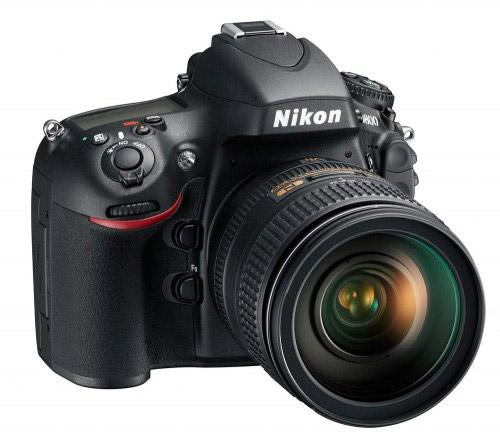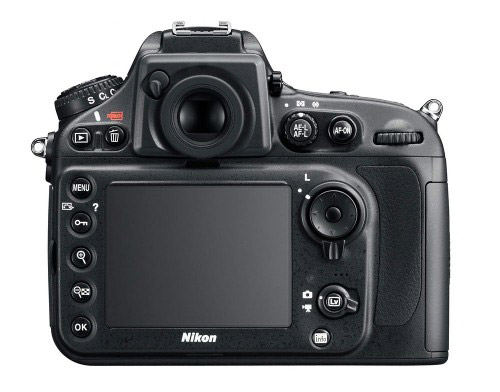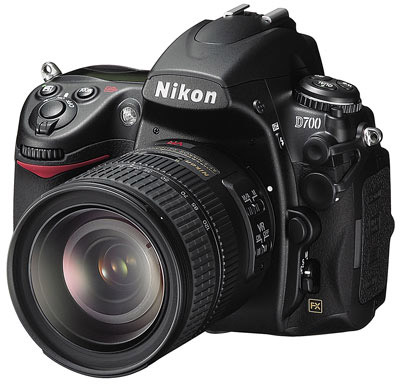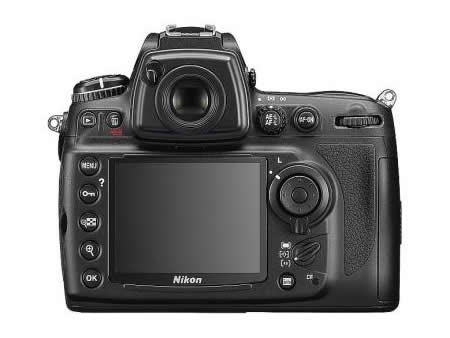I realize that this one seems like a no brainer, especially for those photographers (yes… me), who are completely caught up in the reviews and excitement about the new Nikon D800. Bear with me, though, because I’m trying to come at this from a practical standpoint.
Yes, the D800 is an incredible camera that is the right choice for many photographers. However, there are some very valid reasons that you should not count out the D700.(Edit- August 24: Nikon has discontinued the D700. It’s still an awesome and relevant camera, and as of right now, it’s still my main DLSR body. Read my thoughts on this matter and my hopes for what may follow.)
Let’s do a brief comparison of both bodies, check out the real world specs and see which one might be right for you.
The Nikon D800
The brand new D800 is Nikon’s most ambitious, and perhaps most hyped HD-DSLR camera to date. With it’s 36.3 megapixel CMOS FX sensor, it delivers image resolution that rivals medium format. It also blows every other Nikon completely out of the water when it comes to Full HD video capability.
Essentially, the D800 is a media making machine. It shoots a variety of image sizes in multiple image formats: FX (full frame, 24×36), 1.2x (30×20), DX (1.5x 24×16), 5:4 (30×24), and seven different video resolutions. The largest image that the D800 can produce is a 14-bit RAW file, which is a 74.4 MB and 7,360 x 4,912 pixels.
With dual CF/SD card slots, a built in mic, stereo mic jack, time lapse photography options, a 51-point AF system, EXPEED 3 image processing engine, Advanced Scene Recognition System, a built in pop-up flash and a newly designed, highly ergonomic body that’s even small and lighter than the D700, the D800 is an awesome little camera. In fact, many of the same features that are found on the flagship D4 have been brought to the D800 as well.
However, is it a perfect camera? Not quite. The D800 does have limitations. In packing all that resolution into each shot, the Nikon engineers had to compromise in a couple of areas. The main limitation in most people’s eyes is the reduced frame rate. Max frame rate on the D800 is only 4 fps, which seems eternally slow in this day and age. (My Fuji X10 will fire bursts at up to 10 fps.) In DX mode, you can get 5 fps, and 6 fps with the optional battery grip.
The D800 comes with some hidden costs that don’t always get mentioned. First of all, to take advantage of it’s 36 megapixel sensor, you’ll need the best quality lenses. This pretty much means pro quality “gold label” Nikon lenses. You may find that some lower price glass and “kit” lenses just won’t hold up when shooting in maximum resolution. 36 megapixels will show any imperfection in both equipment and technique.
Also, 74 MB RAW files could very well mean that you’ll need to upgrade software, hard drives and possibly even a new computer, not to mention a whole slew of new memory cards. Are you sure you’re ready for that yet? A $3,000 D800 camera could easily become a $5-7,000 investment. More if you throw in new lenses.
Nikon D700
Don’t count out the highly popular and successful D700. It’s lived a good life so far, and even though it’s been dropped from the lineup, there are still a few to be found online. With it’s 12.1 megapixel full frame FX CMOS sensor, EXPEED image processing engine and excellent low light, high ISO shooting capabilities, the Nikon D700 produces very high resolution 4,256 x 2,832 images and has become the favorite DSLR for many professional adventure and outdoor photographers.
The D700 has, and continues to be my camera of choice for many applications. It’s small, rugged, compact and ergonomically designed body fits perfectly in my hands, and has survived the various rigors that I’ve put it through over the past few years. Basically, my D700 has done just about everything I’ve ever needed it to do, and I’ll be honest, I was in no hurry for the impending D800 announcement.
It has a fast, highly accurate 51-point autofocus system, a 1,005 pixel RGB sensor, a built in flash and a host of custom functions that offer wide flexibility. The D700 doesn’t do video, but it does shoot at 5 fps, and 8 fps with the optional MB-D10 battery grip, and for many people, including me, that’s a big plus.
The Bottom Line: Which One Should You Get?
Despite the incredible hype and total photography nerdiness that many of us are prone to when it comes to gear, the reality is that most people, professionals included, don’t need anything larger than 12-16 megapixels. How many of us make 6-foot wide prints? That’s how big an image that the D800 produces at max file size.
In this day and age, MOST pictures that are EVER taken by MOST people only end up being reproduced on the web at 1/4 page or smaller. We’re taking Facebook and blogs. Even a full screen image on a 30″ monitor is still only about 2,500 pixels wide. Not even close to the D800’s 7,360 pixel size.
That’s not to say that you shouldn’t consider a camera like the D800. It’s a fantastic DSLR that will allow you to express your creativity with high caliber, professional quality work, as long as you have the technical skills to match. Besides- Gear is cool, and modern technology has a lot of offer the modern photographer/storyteller.
That said, keep in mind that even the Nikon engineers have said that the D800 is NOT a replacement for the D700. It’s a whole new class of camera, designed for professional media creators. Despite the hype, the D700 is still a very relevant and capable camera.
Why you’d want the D800: If you’re a professional photographer who shoots for high end reproduction or who consistently makes large format prints, or if you want to expand your video capabilities in a big way, the yes, definitely consider the D800.
It will give you the best possible image quality of just about any camera out there, and it will put professional quality movie making capabilities in your hands. Just make sure you’re ready to drop some cash for new hard drives and make sure your lens collection is up to the task.
If you’ve got money to burn in your pocket, then yes, get the D800, and order it now so that it will arrive at your doorstep sooner. Note: D800 bodies are starting to trickle in at Amazon. Right now, this is your best chance for picking one up. Stock is in and out, so if you miss out, check back in a few days.
Why you’d want the D700: If you’re a pro, semi pro or enthusiast photographer who wants a rugged camera that will get the job done in a wide variety of situations, and if you don’t HD video on your DSLR (maybe you have an HD video point and shoot), then definitely consider the D700. It’s also a great choice if you’re looking to upgrade from an older DSLR like the D40, D90 or from an entry level camera like the D3100 or D5100, or if you’ve got a D90 or D7000, but want a full frame FX body.
The D700 is an awesome camera that is still used by pros worldwide, including me, and it shoots a faster frame rate than the D800, which makes it great for shooting action and sports. Throw the MB-D10 on it and you’ve suddenly got an 8 fps action shooting powerhouse that costs half as much as a D3S, and nearly one third as much as a new D4.
Also, the D700 is $800 cheaper than the D800, and the D700’s are in stock right now. You could order one today and be shooting with it tomorrow. Order a D800 and you’ll likely be waiting until May.
Finally, the D700 doesn’t come with the hidden costs of computer, hard drive and CF card upgrades. Chances are, your system is already capable of handling it’s RAW files, which are only 13 MB in size.
Remember what I said – Photography is not about the gear, it’s about the creative eye and technical skills behind the lens. I’m not saying that you shouldn’t get one or the other; just be smart with your money and use careful evaluation before you pull the trigger.
[iframe]<iframe width=”120″ scrolling=”no” height=”150″ frameborder=”0″ style=”border:none;” border=”0″ src=”http://mer54715.datafeedfile.com/widget/aff_widget_prdt_generate-2.0.php?aff_num=6746&aff_net=1&widget_num=969″ marginheight=”0″ marginwidth=”0″></iframe><iframe width=”120″ scrolling=”no” height=”150″ frameborder=”0″ style=”border:none;” border=”0″ src=”http://mer54715.datafeedfile.com/widget/aff_widget_prdt_generate-2.0.php?aff_num=6746&aff_net=1&widget_num=957″ marginheight=”0″ marginwidth=”0″></iframe>[/iframe]





Good post. I am very happy with my D700 and do not have the urge to get the D800. I did when I first heard of the D800 but am now content with my D700. I went from the D300s to the D700 to take advantage of my full frame 16-35 and 70-200.
How ironic you posted this today! I’ve been researching the D700 most of the day trying to determine if I should upgrade from my D300. It appears that the answer is a no-brainer? Thanks Dan!
Great Post!! Exactly what i have been lookign for. I am using a D90(which is a pretty good camera) but have been wanting to upgrade to full frame. my choice were D700 or 5d Mk II but after announcements of D800 and 5d Mk III, i got even more confused. Should i get the latest model with all the latest technology or get something which is already 3 years old in terms of technology. Thanks
Hi there,
Great comparison. Picked up lots of things.
Do compare Nikon D5100 next time.
Hi,
On paper there are two factors to the D800 that scream out at you: 1080p video and a 36 megapixel sensor.
Andrew Childress
Josh, thanks for your comment. I actually did a D7000 vs. D5100 comparison a few months ago. You can check it out here: https://danbaileyphoto.com/blog/comparing-nikon-dslrs-the-d5100-vs-the-d7000/
As noted below – your comment on the high ISO shooting capabilities –
How high can one push the ISO without getting a lot of noise when using a slower zoom lens out to 5.6 in low light such as early mornings, late afternoons?
Thanks
Don’t count out the highly popular and successful D700. It’s lived a good life so far, but it’s not done with it’s run yet. With it’s 12.1 megapixel full frame FX CMOS sensor, EXPEED image processing engine and excellent low light, high ISO shooting capabilities
Gil- PM sent.
So now I am more confused. I love my D300s but it is starting to get worn out. I want to start photographing bands, street photography, scenic and wildlife but I don’t know which camera to get. I don’t use the video that much right now but my cameras need to be extremely rugged. I want something that shoots in the dark well with very little noise but I also want good quality photos.
Rebecca, from what you said, I’d strongly recommend the D700. It does low light extremely well, and believe me, it’s rugged. It has a full frame sensor and outstanding resolution for high end professional work. I went from the D300 to the D700 and never looked back. It’s been my main body ever since I bought it. I’ve shot all my recent pro work on it and have banged it around more than the average person every will. Knowing your style, my advice is to save yourself the $900 and go with the D700. Hope that helps.